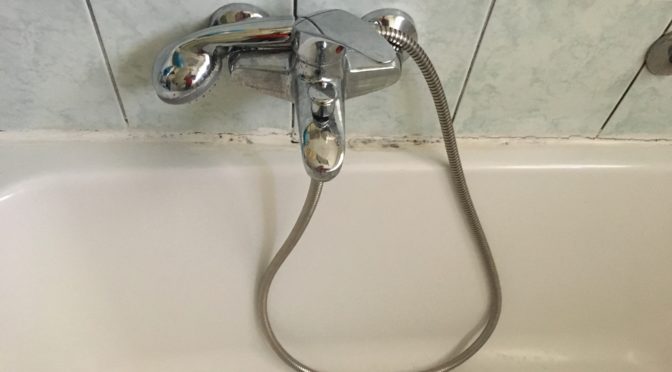TL;DR
This post is real world example of path testing.
Featured image of this post depicts the problem: a shower tap. When shower “head” was used, there was no hot water.
Lets apply path testing in order to identify the problem. Shower tap consists of:
- head
- hose
- tap
Feature of interest are hot water paths. Here are identified paths:
- tap
- tap => hose
- tap => hose => head
- another tap (comparable product) without shower head
Tess pass criteria (ok): flow is of desired temperature and constant for one minute
Test sessions:
- open hot water to flow just through tap: ok
- use another tap: ok
- use shower head: fail
- replace shower head: fail
- replace hose and use new head: ok
- use new hose and old head: ok.
Issue was with shower hose. Hot water is rather extreme condition for any material, and shower hose interior is made of rubber. That part lost original integrity and that path was congested.
You can learn about path testing in BBST Foundation course.



